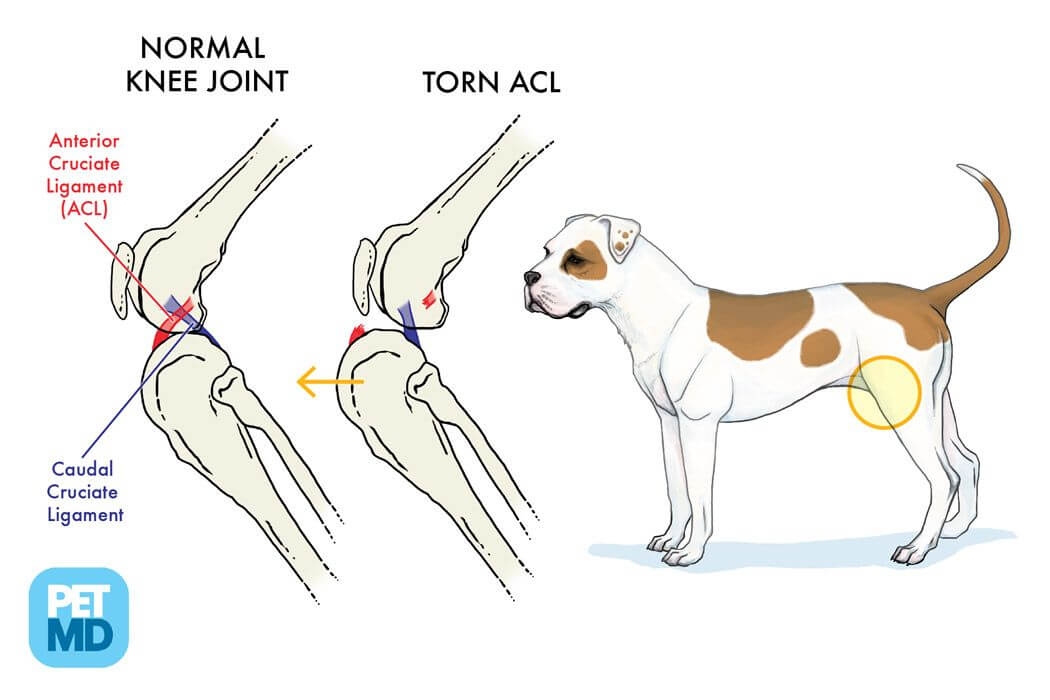A torn ACL, or anterior cruciate ligament, is a common injury in dogs that affects the stability of their hind limb. Dogs with this injury may experience pain, limping, and difficulty bearing weight on the affected leg. The question arises whether a dog can live comfortably with a torn ACL.
Studies show that dogs can adapt and live relatively comfortably with a torn ACL, given proper medical attention and care. Veterinarian assistance is crucial in determining the severity of the injury and recommending suitable treatment options. Non-surgical management, including rest, medication, and physical therapy, can help alleviate pain and promote healing.
Rest plays a significant role in the recovery process, as it allows the torn ACL to heal and reduces strain on the injured leg. Medications, such as non-steroidal anti-inflammatory drugs (NSAIDs), are commonly prescribed to manage pain and inflammation.
Physical therapy, consisting of specific exercises and techniques, strengthens the surrounding muscles, providing additional support for the affected leg. Rehabilitation exercises include gentle range-of-motion movements, balancing exercises, and hydrotherapy.
While non-surgical interventions can improve the overall well-being of a dog with a torn ACL, it is important to note that surgical intervention is often considered the most effective long-term solution. Surgical procedures, such as TPLO (tibial plateau leveling osteotomy) or TTA (tibial tuberosity advancement), repair or stabilize the torn ligament, restoring normal functioning to the joint.
Ultimately, management of a torn ACL in dogs should be based on the individual pet’s needs and the severity of the injury. By working closely with a veterinarian and following their recommendations, the dog can experience an improved quality of life, reduced pain, and increased mobility. It is crucial to provide a safe and comfortable environment for the dog during recovery, including the use of orthopedic beds and limited physical activity.
In conclusion, while a torn ACL can cause discomfort and may limit mobility in dogs, proper care, including veterinary assistance, medication, physical therapy, and potentially surgery, can help improve their quality of life and allow them to live comfortably.
Can ACL injury heal on its own in dogs?
Dogs can sometimes recover from cruciate ligament damage without surgery, but you need to consider their age, their general health, and the severity of their injury. If left untreated, a partially torn or ruptured cruciate ligament can improve within three to six weeks for most dogs, especially small ones.Jun 9, 2022
Will an ACL tear in a dog heal itself?
Dogs can sometimes recover from cruciate ligament damage without surgery, but you need to consider their age, their general health, and the severity of their injury. If left untreated, a partially torn or ruptured cruciate ligament can improve within three to six weeks for most dogs, especially small ones.Jun 9, 2022
Do you have to put a dog down for a torn ACL?
Before making a decision, you should consult with your veterinarian to get their professional opinion. They will be able to tell you whether or not your dog is a candidate for surgery and what the long-term prognosis is. It’s worth noting that surgery will almost always be better than euthanasia for a torn ACL.Jan 4, 2023
How do you know if a dog has a torn ACL?
Symptoms of ACL Injuries in Dogs Stiffness (particularly after rest, following exercise). Difficulty rising off floor. Struggling to jump up on furniture or climb stairs. Hind leg lameness and limping.


